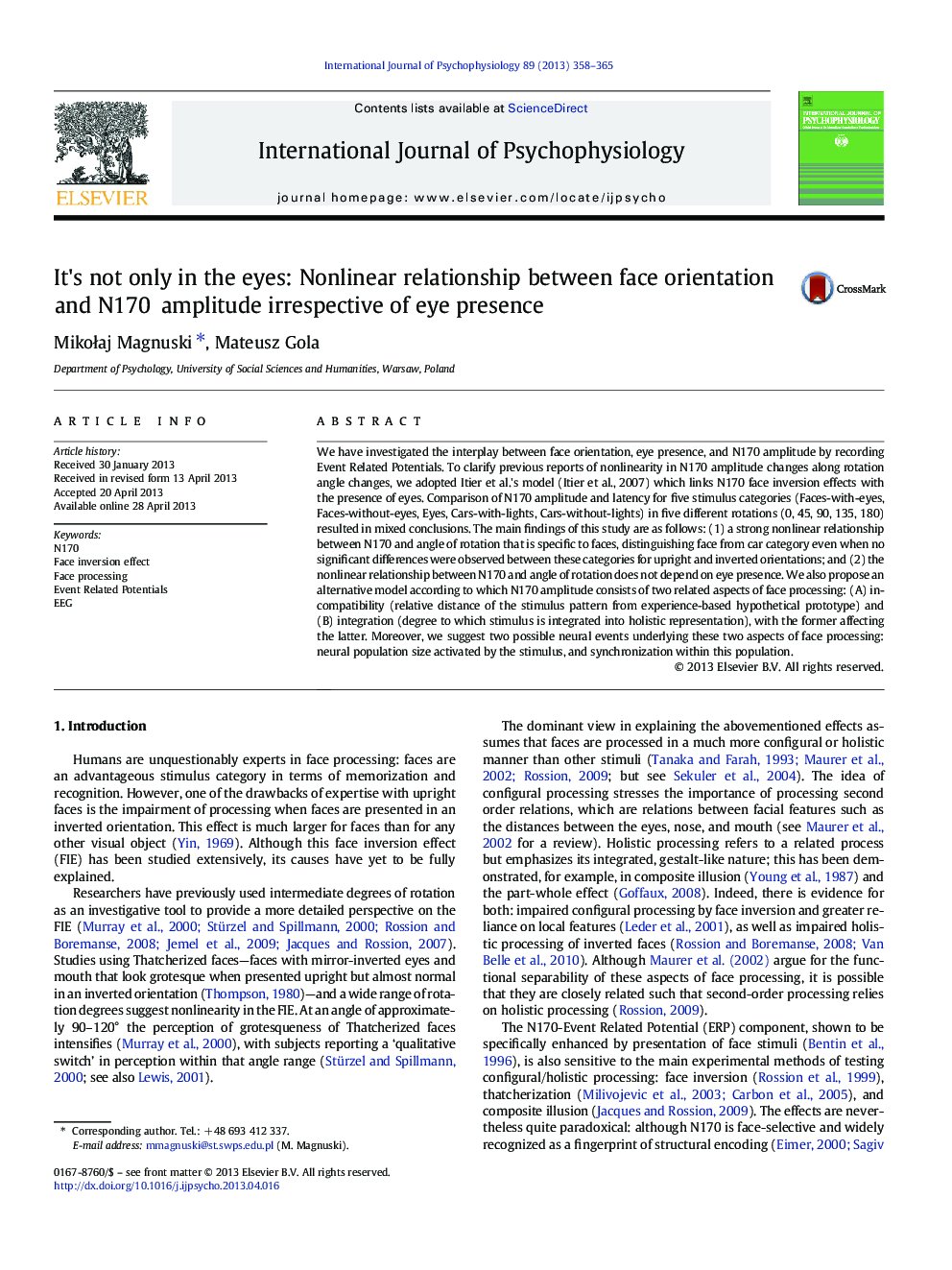| Article ID | Journal | Published Year | Pages | File Type |
|---|---|---|---|---|
| 7295880 | International Journal of Psychophysiology | 2013 | 8 Pages |
Abstract
We have investigated the interplay between face orientation, eye presence, and N170 amplitude by recording Event Related Potentials. To clarify previous reports of nonlinearity in N170 amplitude changes along rotation angle changes, we adopted Itier et al.'s model (Itier et al., 2007) which links N170 face inversion effects with the presence of eyes. Comparison of N170 amplitude and latency for five stimulus categories (Faces-with-eyes, Faces-without-eyes, Eyes, Cars-with-lights, Cars-without-lights) in five different rotations (0, 45, 90, 135, 180) resulted in mixed conclusions. The main findings of this study are as follows: (1) a strong nonlinear relationship between N170 and angle of rotation that is specific to faces, distinguishing face from car category even when no significant differences were observed between these categories for upright and inverted orientations; and (2) the nonlinear relationship between N170 and angle of rotation does not depend on eye presence. We also propose an alternative model according to which N170 amplitude consists of two related aspects of face processing: (A) incompatibility (relative distance of the stimulus pattern from experience-based hypothetical prototype) and (B) integration (degree to which stimulus is integrated into holistic representation), with the former affecting the latter. Moreover, we suggest two possible neural events underlying these two aspects of face processing: neural population size activated by the stimulus, and synchronization within this population.
Related Topics
Life Sciences
Neuroscience
Behavioral Neuroscience
Authors
MikoÅaj Magnuski, Mateusz Gola,
